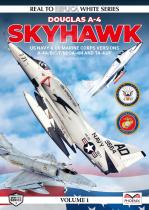The Rolls-Royce powered Vickers VC10, and its larger variant, the Super VC10, represented the ultimate in 1960s subsonic airliners. The VC10 was Britain’s answer to the Boeing 707 and the Douglas DC-8.
The VC10 was a second-generation jetliner designed in the 1960s and manufactured into the 1970s. It incorporated advanced engineering, new aerodynamics, and design features, to produce a machine easily identifiable by its high T-tail design and rear-engine configuration.
The VC10 could take off in a very short distance, climb more steeply and land at slower speed than its rivals the Boeing 707 and Douglas DC-8. These were vital safety benefits in the early years of the jet age. At one stage, the Super VC10 was the biggest airliner made in Europe and the fastest in the world.
On entry into service, both the VC10 and the longer Super VC10 carved out a niche with passengers who enjoyed the speed, silence and elegance of the airliner. Pilots, meanwhile, loved its ease of flying and extra power.
In service until the 1980s with British Airways, and until 2013 with the RAF, the VC10 became a British icon and a national hero, one only eclipsed by Concorde.









